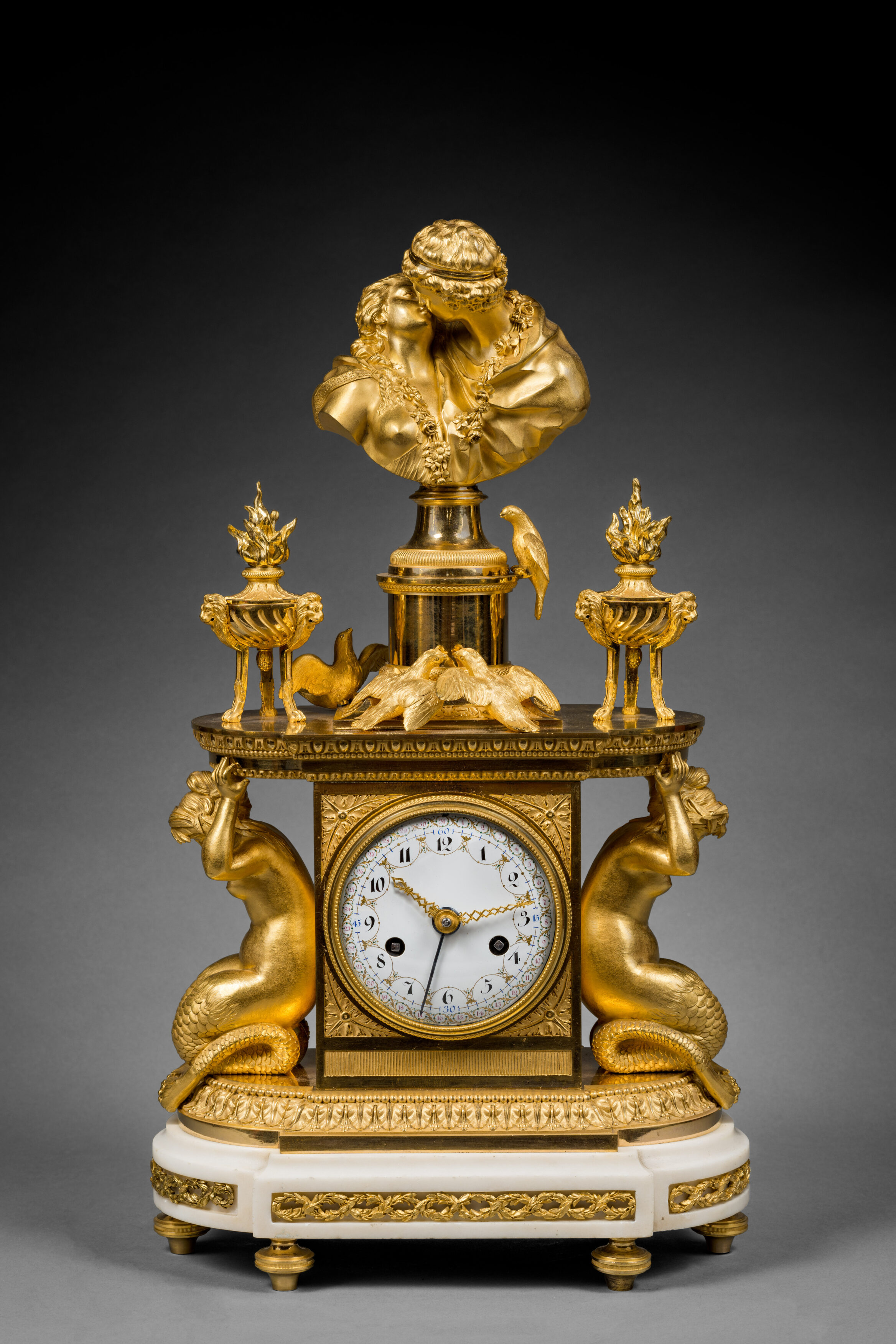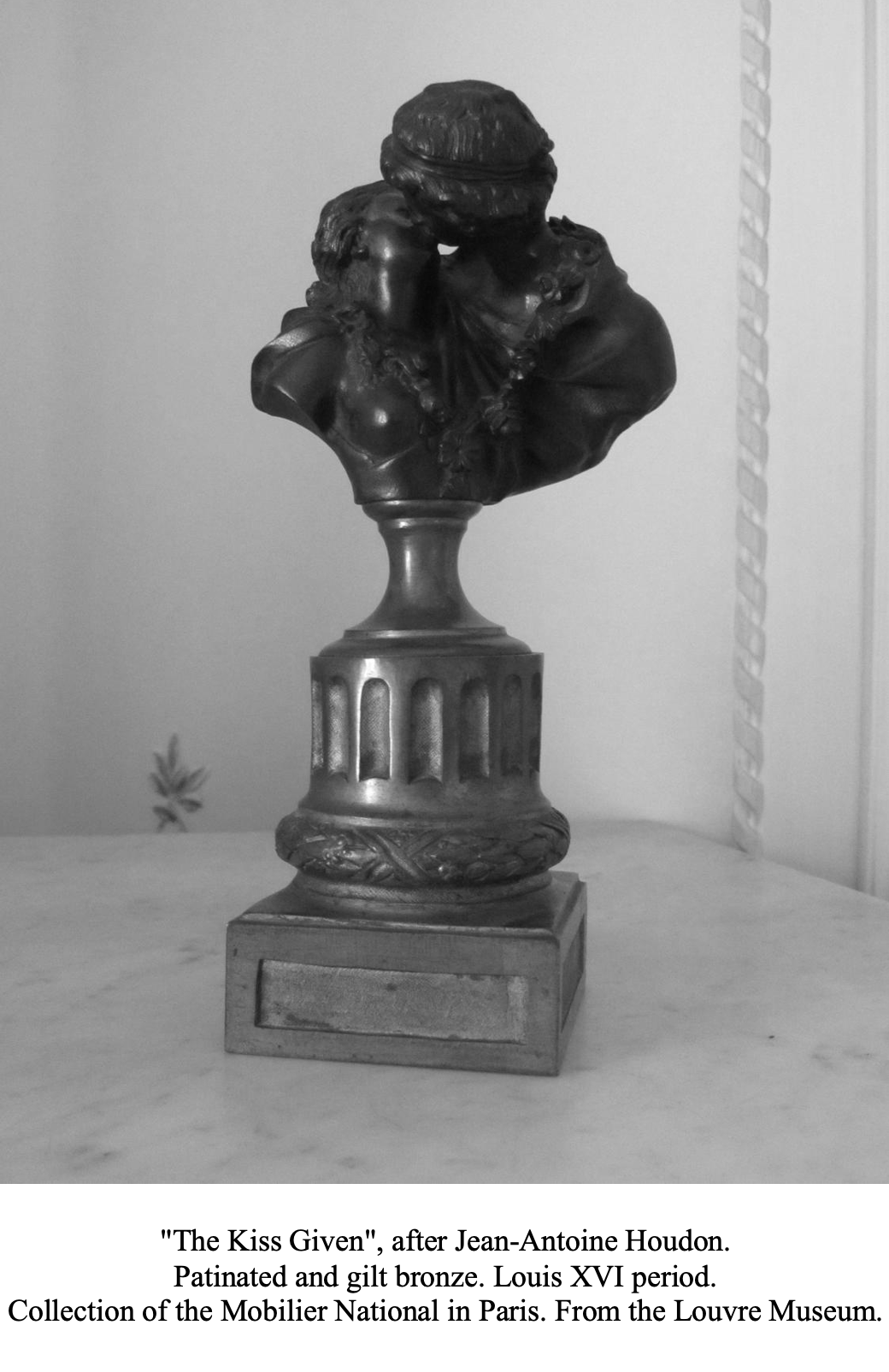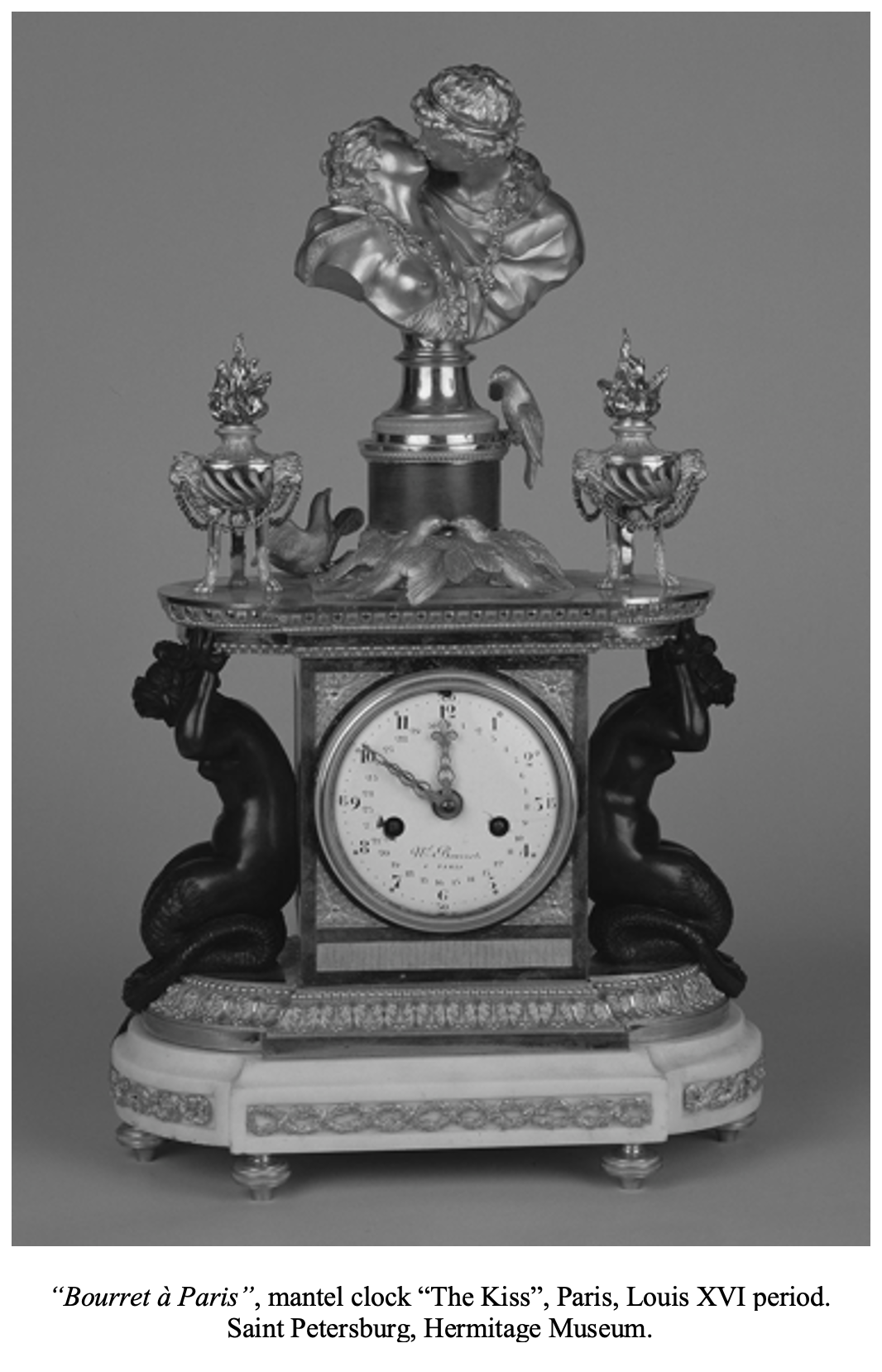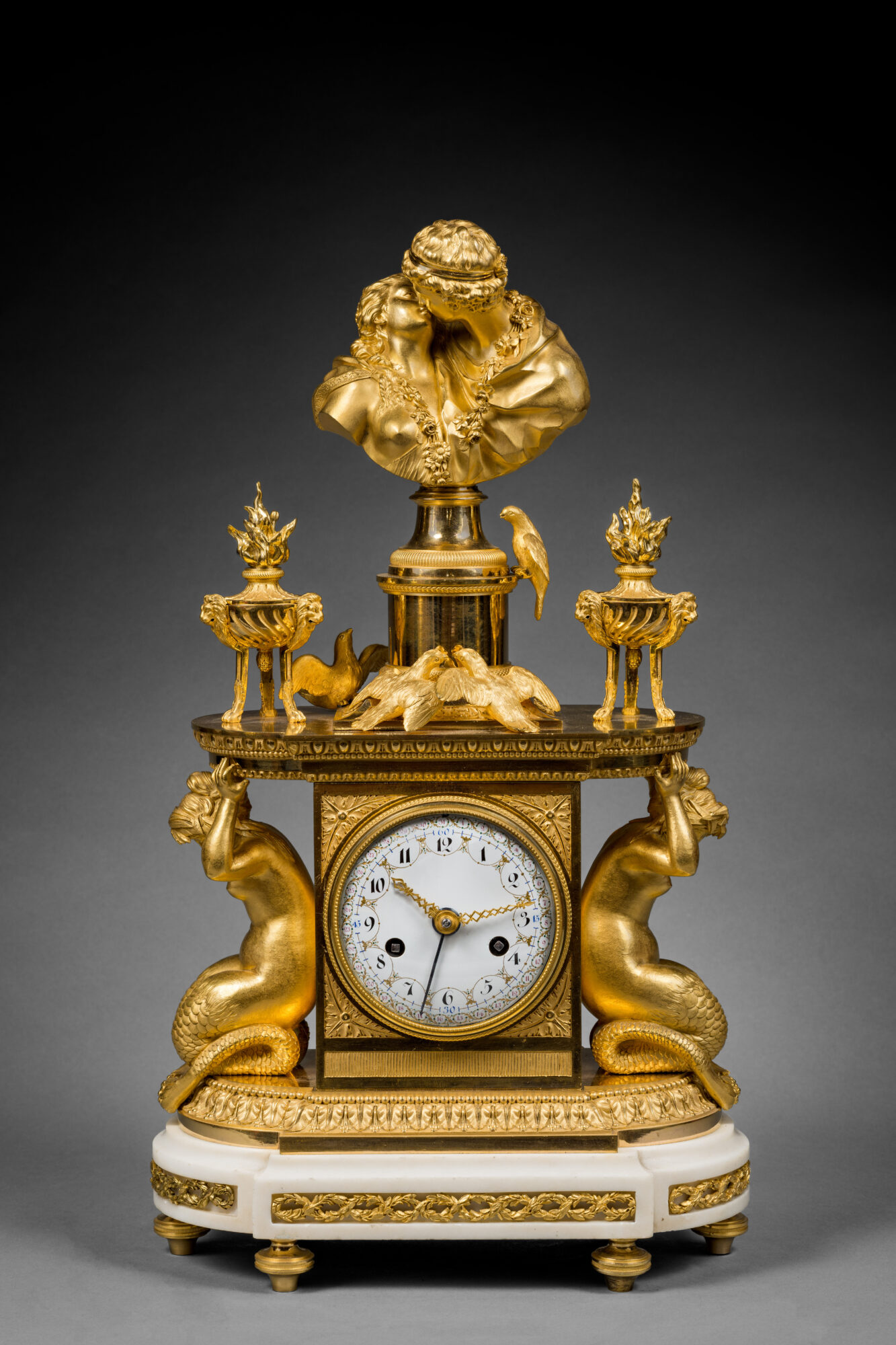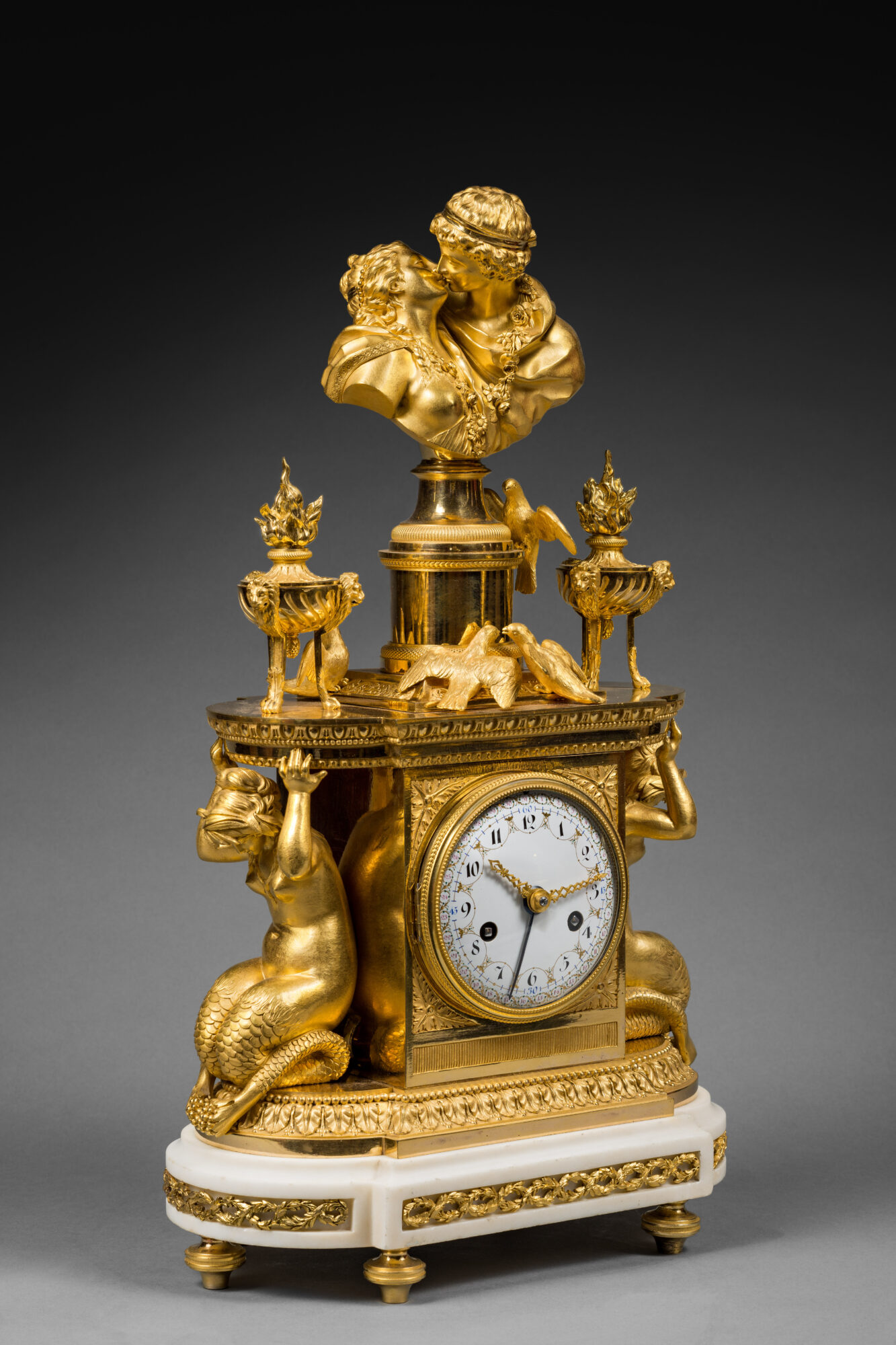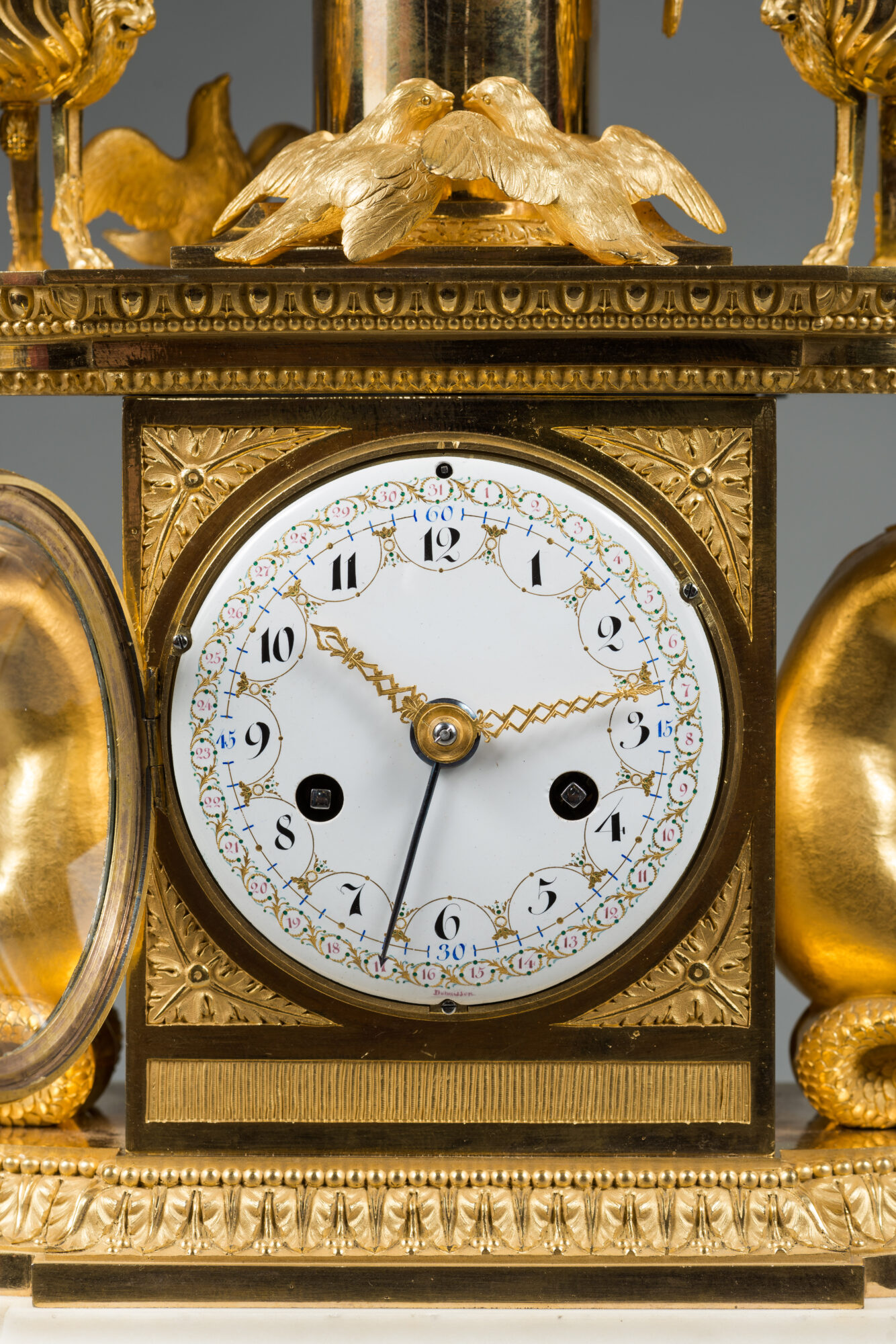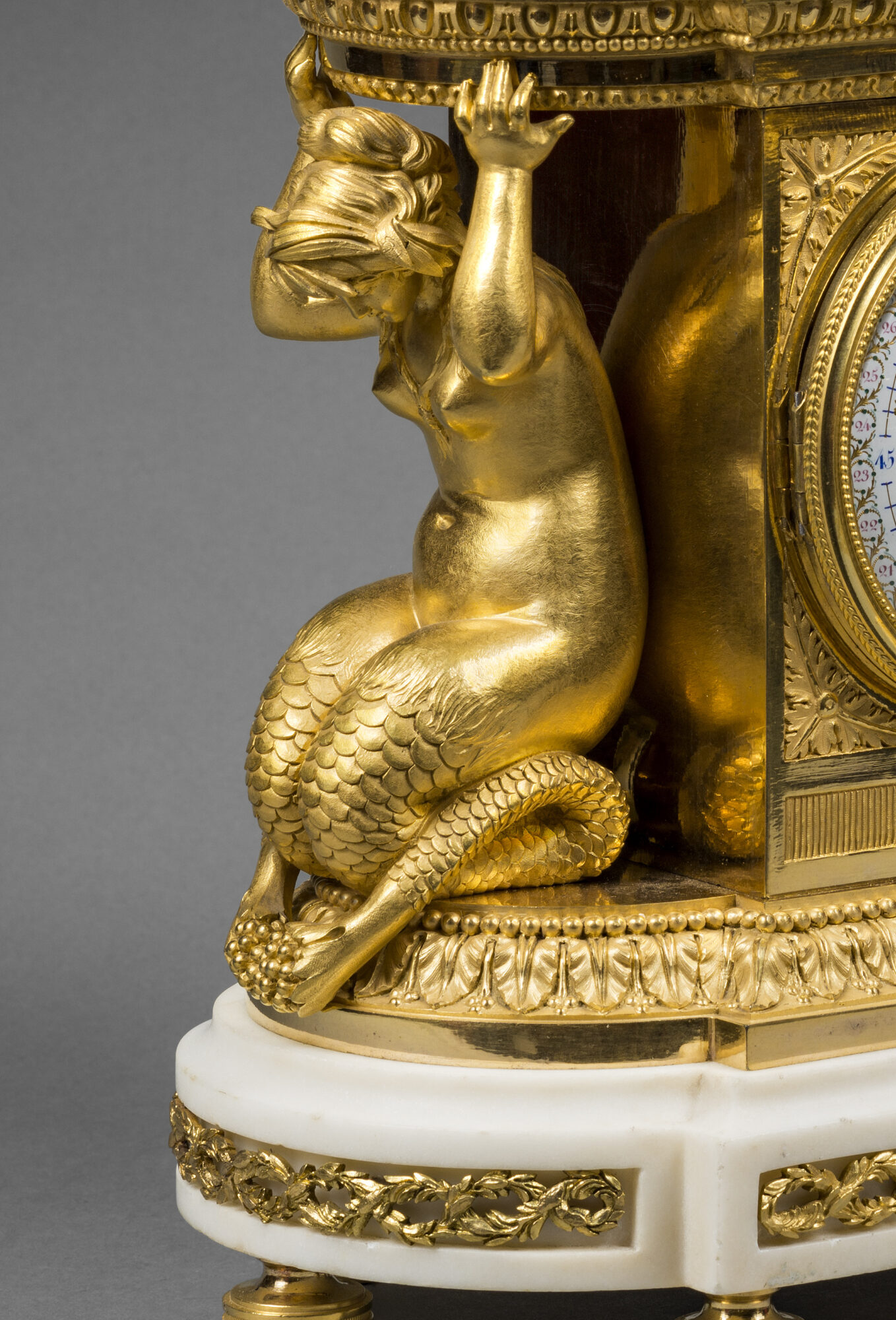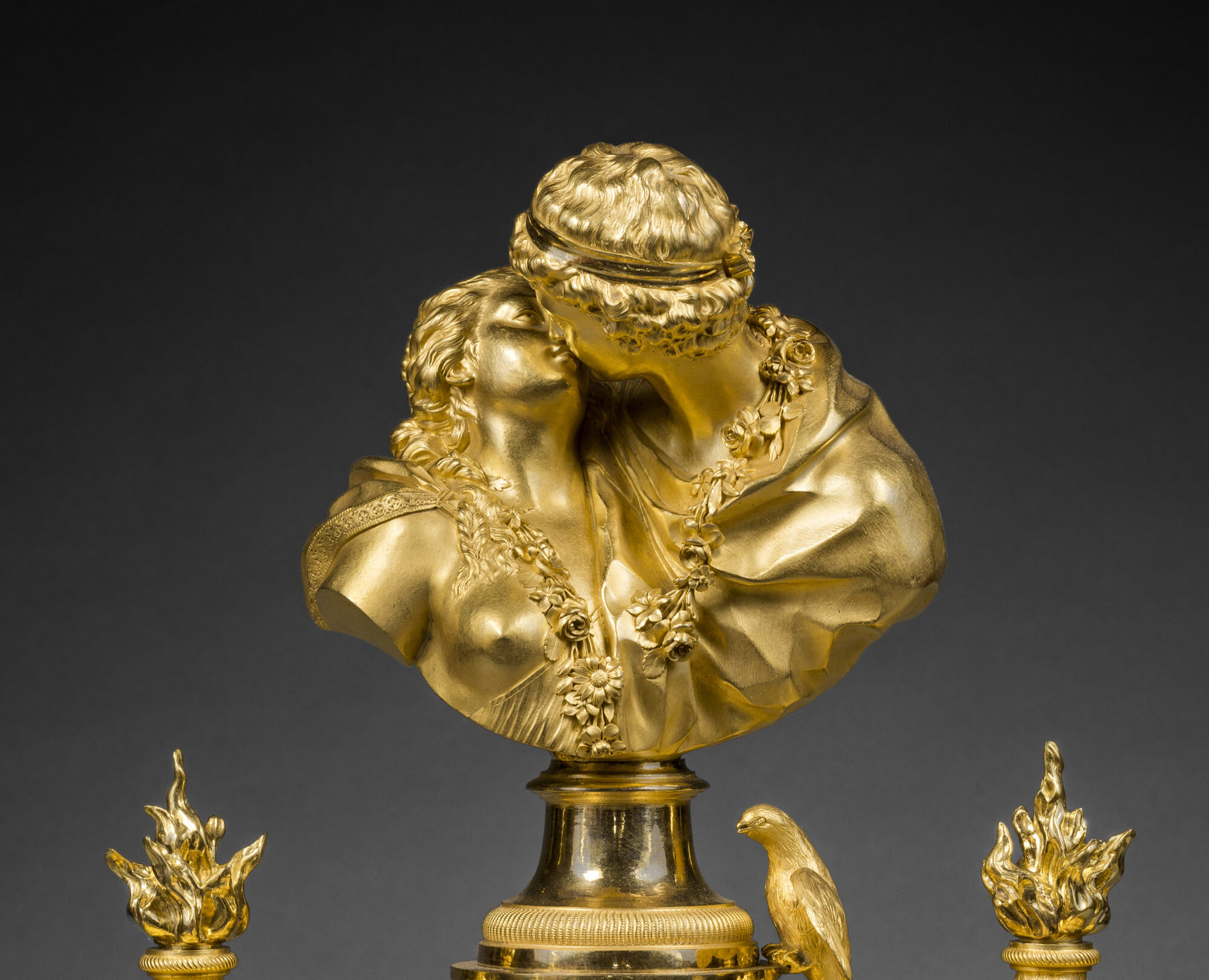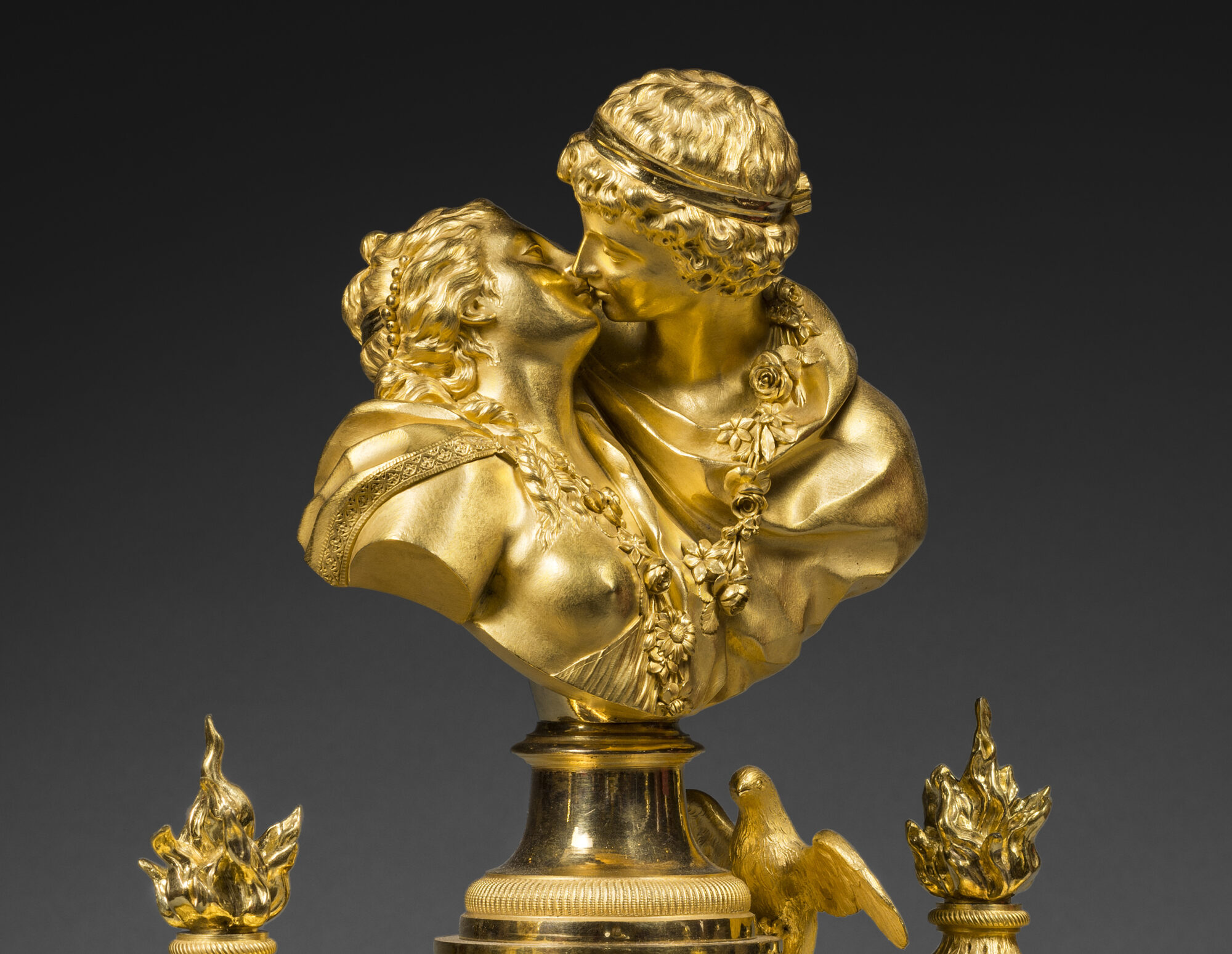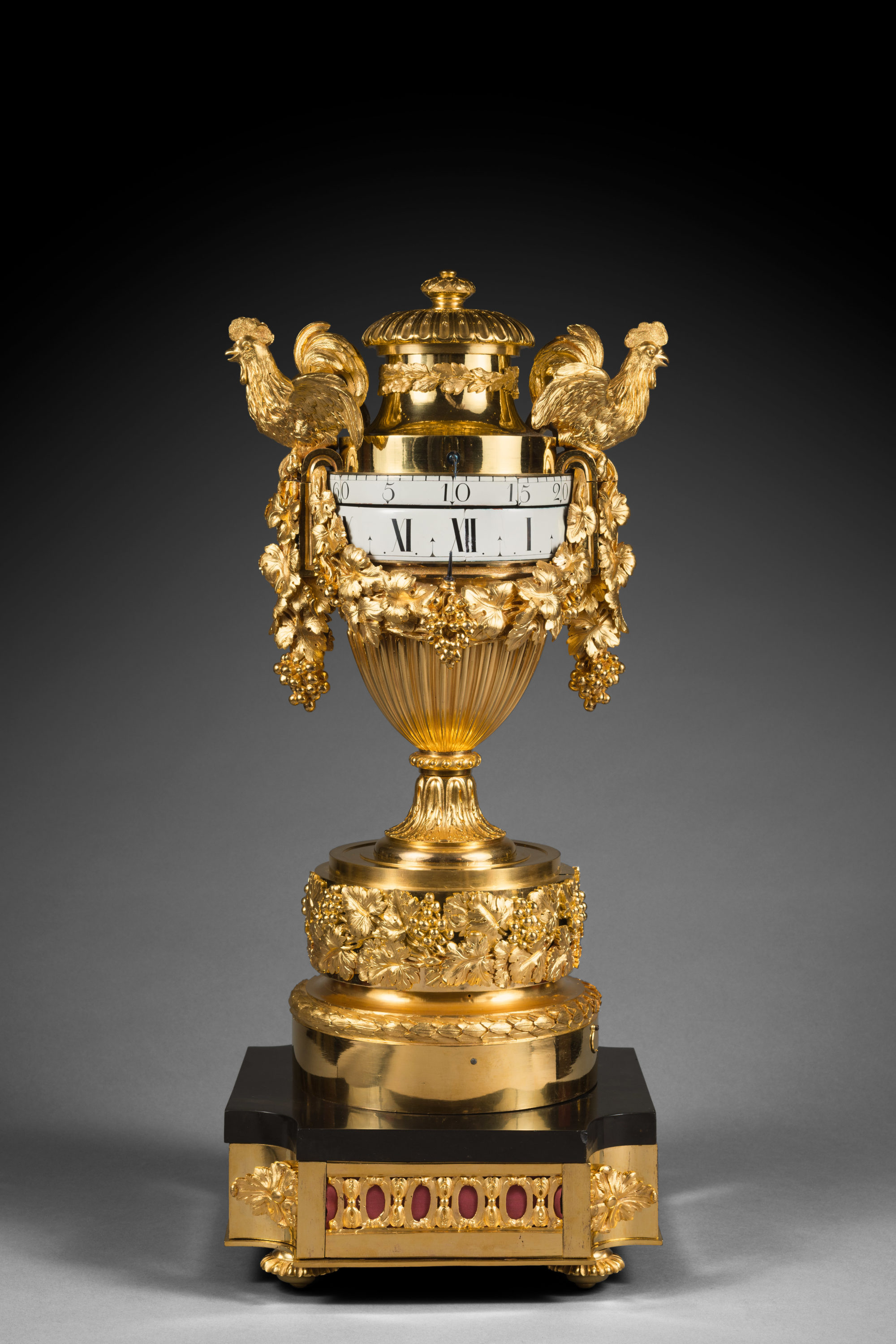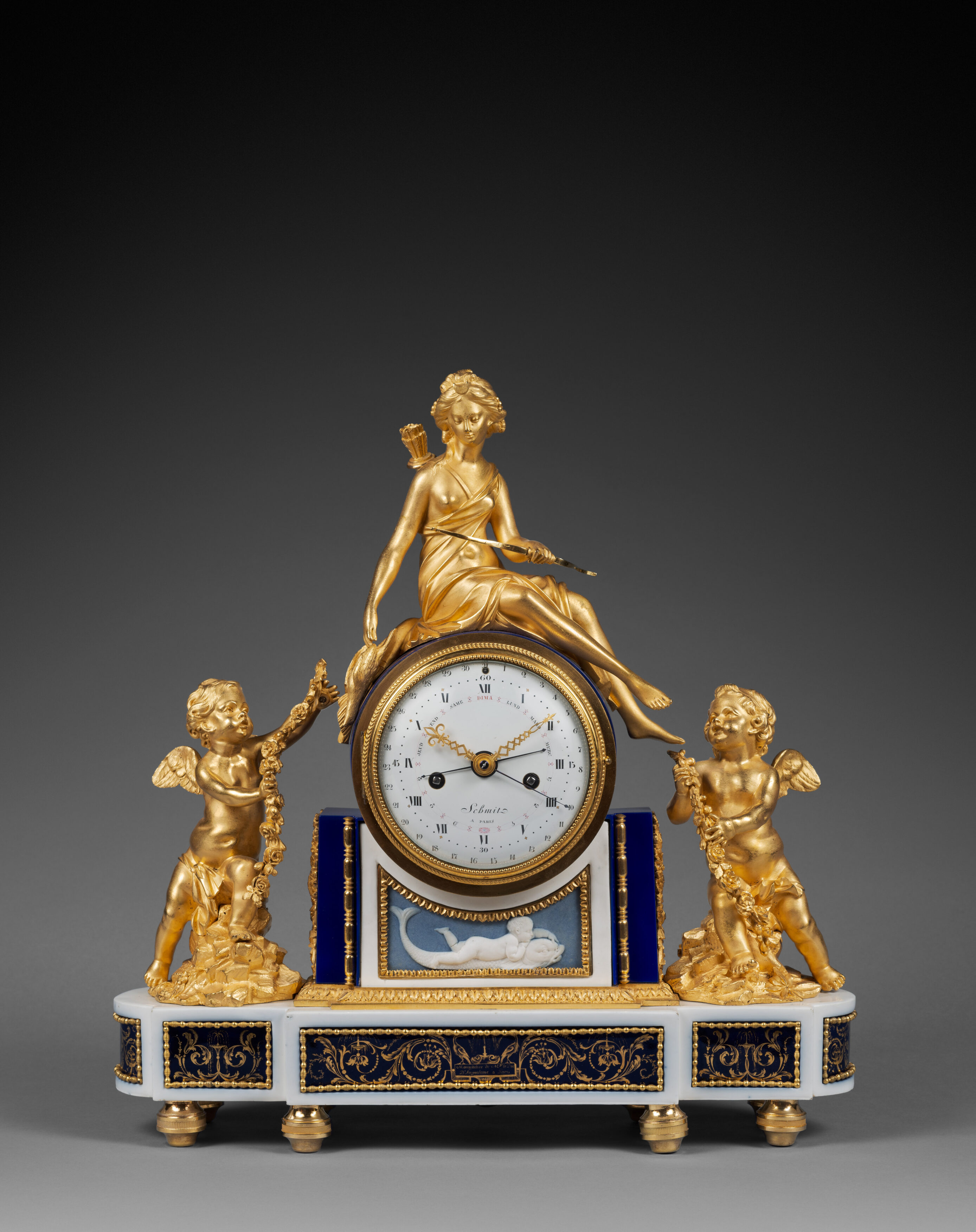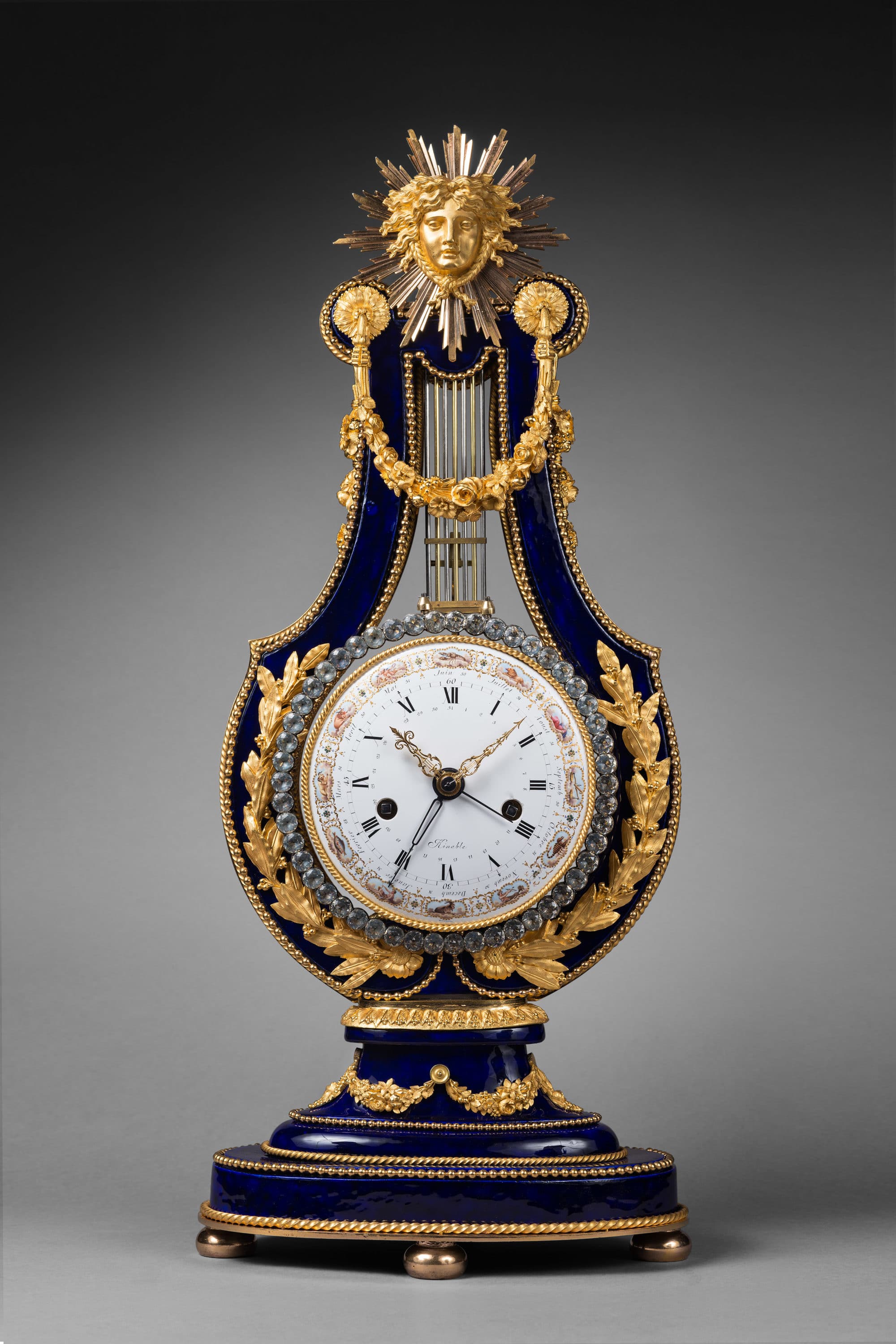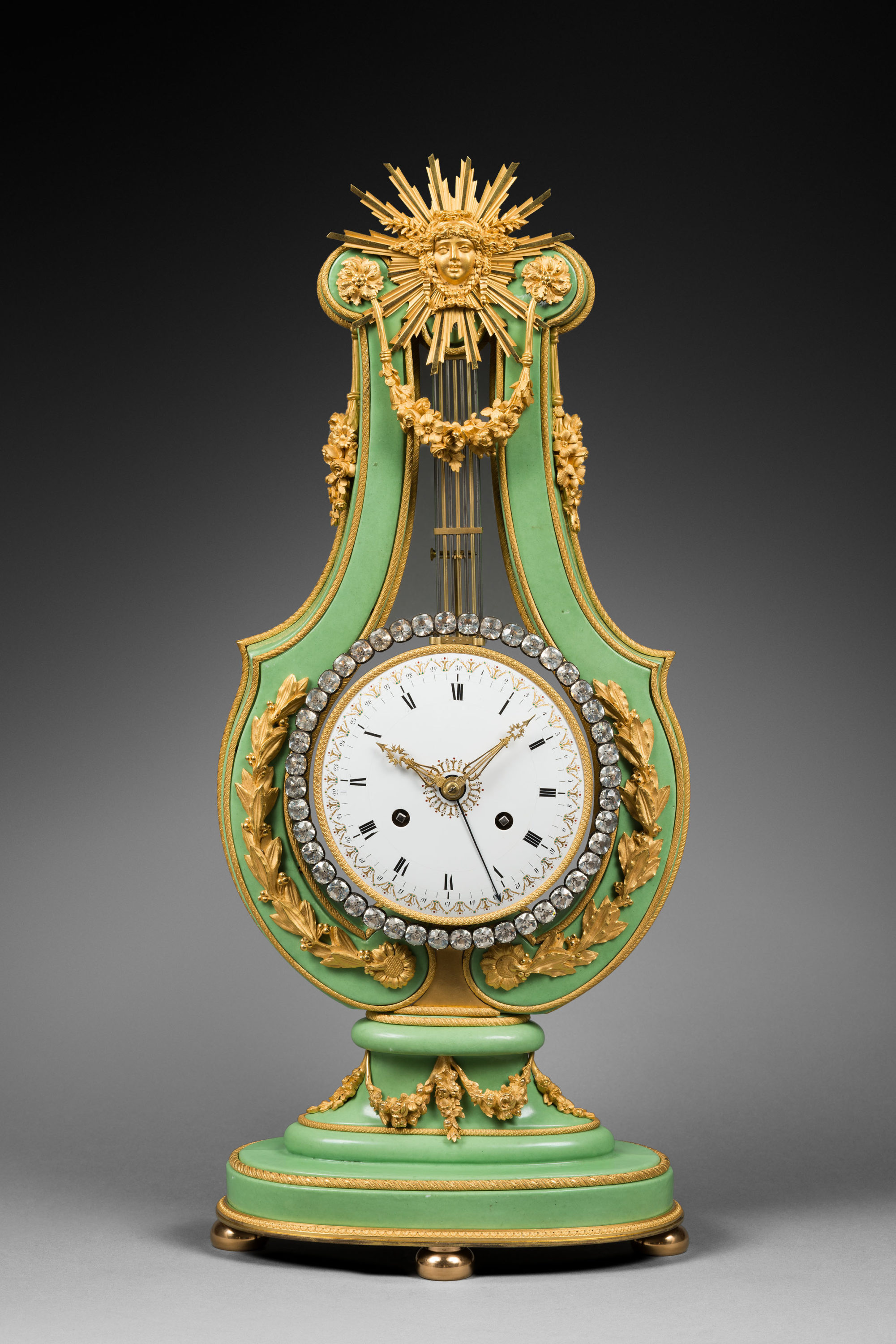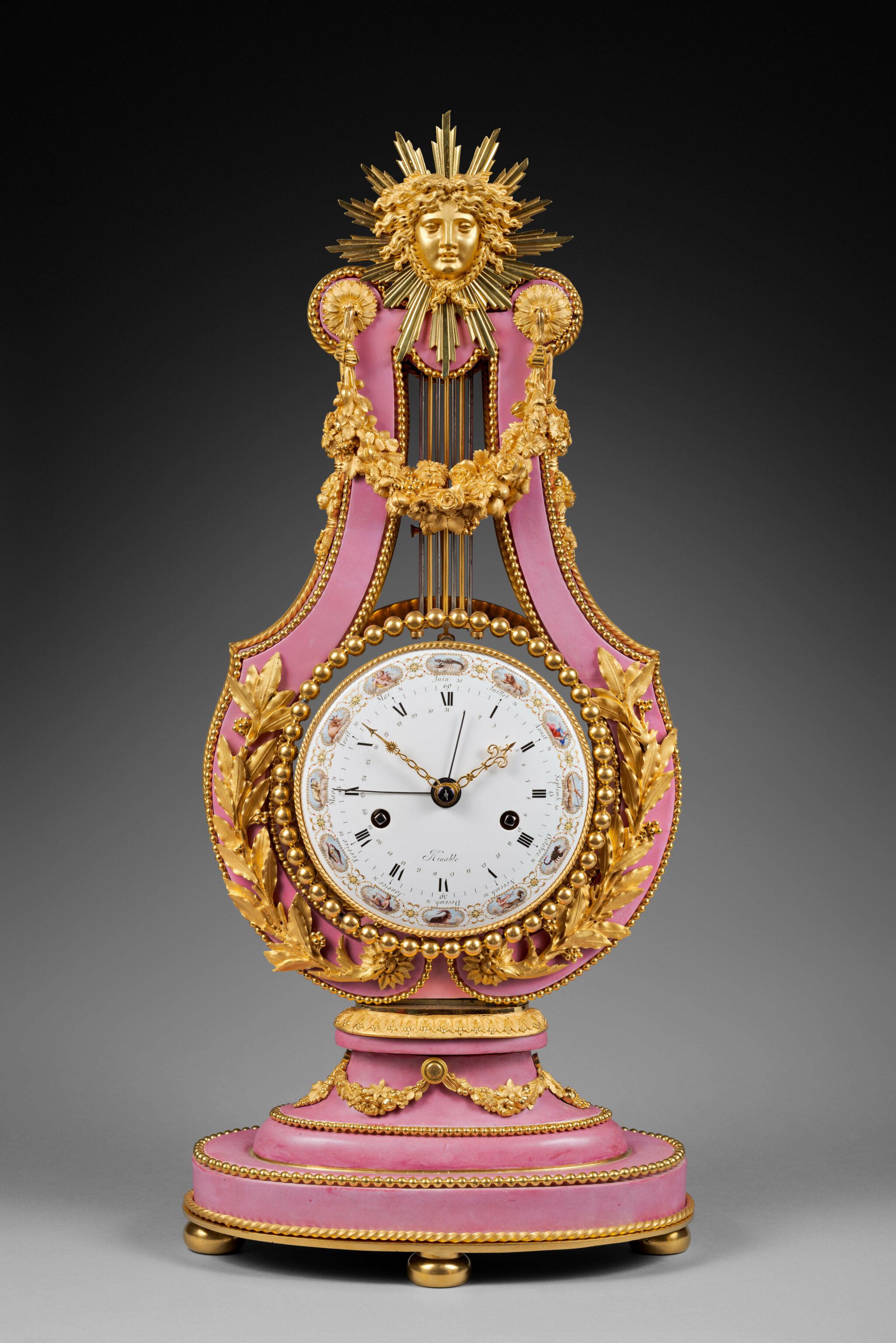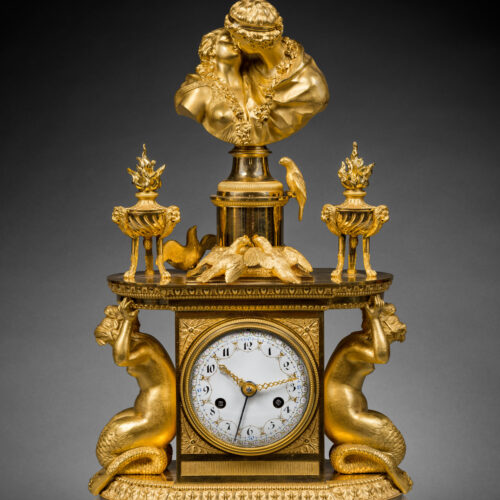Rare Gilt Bronze Mantel Clock
“The Kiss Given”
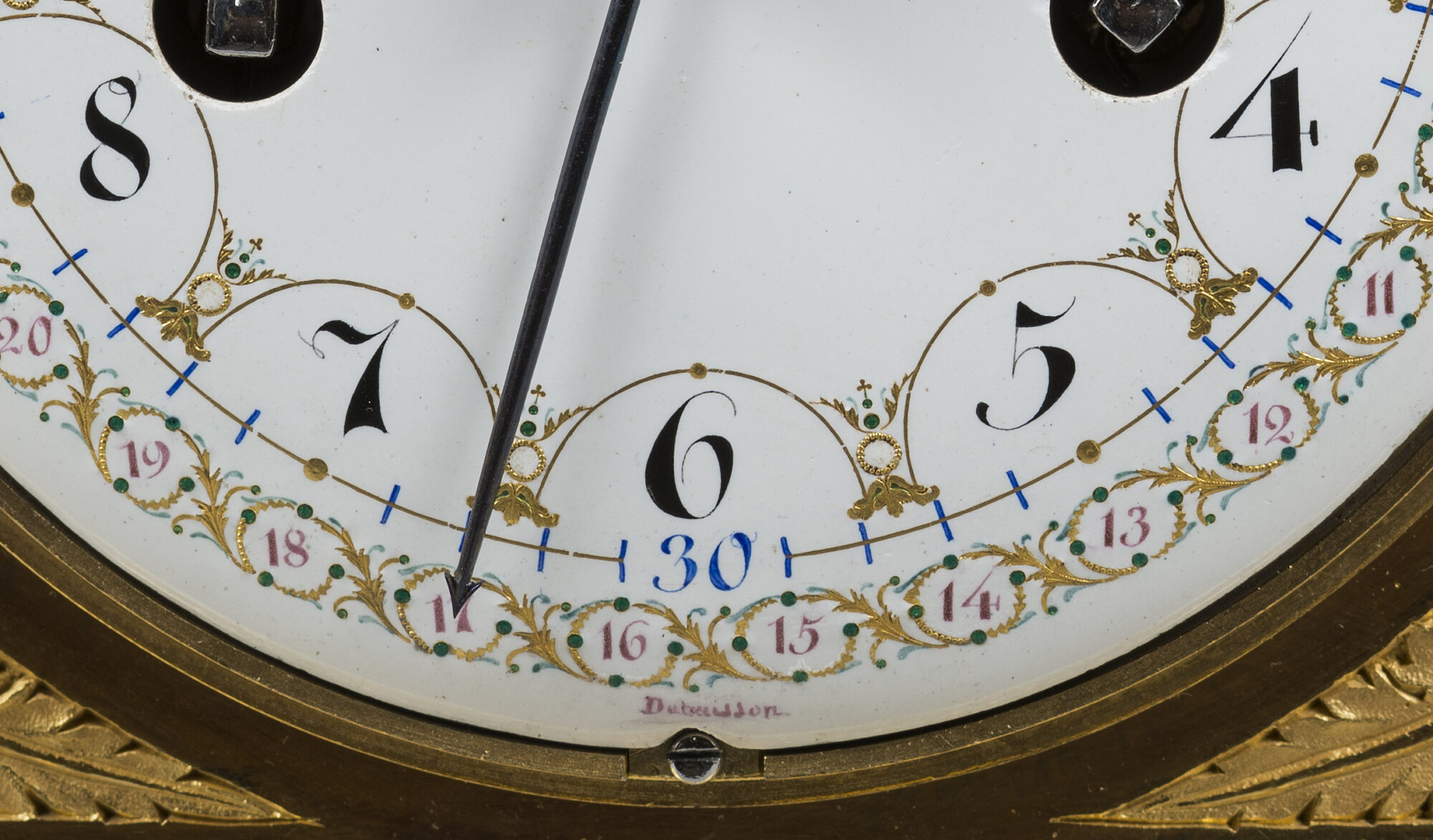
Enamelled dial by Etienne Gobin, known as Dubuisson
After a model by Jean-Antoine Houdon
Paris, Louis XVI period, circa 1785
The round enamel dial, signed “Dubuisson”, indicates the Arabic numeral hours and fifteen-minute intervals by means of two pierced gilt bronze hands, as well as the date by means of a steel hand. The gilt bronze neoclassical case is very finely chased. The dial is framed by chased foliate spandrels. The case, in the form of an antique milestone, is flanked by two magnificent mermaids who support the entablature, which is adorned with egg and dart friezes, beading, and stylised leaves. On it stands the sculpture “The Kiss Given”. It stands on a pedestal, around which are four doves and two flaming tripod incense burners, which are decorated with spiral fluting and the heads of lions holding chains in their mouths. The plinth is adorned with beading and a frieze of stylised flowers. It is set upon a rectangular base with rounded corners, which features interlace leaf friezes and is raised upon six finely chased toupie feet.
Discover our entire collection of rare antique clocks and antique mantel clocks for sale online or at the gallery.
This rare model is mentioned in several 18th century documents. One clock, probably identical to the present model, was offered at the sale of the collection of a certain Monsieur Tricot in 1793: “N°211. A clock that strikes the hours and half hours, with date, by Bourret; It is set on a high square base and is surmounted by an elaborate pediment decorated with egg and dart motifs, supported by two naiad caryatids with fish tails; the stepped base is adorned with water leaves and interlace motifs, the white marble base is raised upon ball feet. The upper portion of the clock represents Mark Anthony and Cleopatra kissing, after Houdon. The sculpture is set upon a column, with four doves, and on either side a cassolette. This magnificently executed clock is finely matte gilded; with a glass dome. Height 17 pouces, width 10 pouces”. Today only a few identical clocks are known.
Among them, one example with a red griotte marble base, whose dial is signed “Robin à Paris”, was formerly in the Fabius Frères collection (illustrated in Tardy, La pendule française, 2ème partie: Du Louis XVI à nos jours, Paris, 1975, p. 255). A second example, whose dial is signed “Bourret à Paris”, is illustrated in Giacomo and Aurélie Wannenes, Les plus belles pendules françaises, de Louis XIV à l’Empire, Editions Polistampa, Florence, 2013, p. 245. A third clock, also signed Bourret, was in the Jean Gismondi Gallery in Paris (illustrated in J-D. Augarde, Les ouvriers du Temps, Genève, 1996, p. 286, fig. 219). One further such clock, with patinated mermaids, is in the Hermitage Museum in Saint Petersburg.
Dubuisson (1731 - after 1820)
Etienne Gobin, known as Dubuisson, was one of the most talented Parisian enamellers of the reign of Louis XVI and the Empire period. Born in Luneville in 1731, he began his career as a painter on porcelain in Strasbourg and Chantilly. He then moved to Paris and worked at the Royal Sèvres porcelain manufactory from 1756 to 1759, specializing in the decoration of watch cases and clock dials. In the 1790s, his workshop is mentioned as being in the rue de la Huchette, then the rue de la Calandre around 1812. He appears to have retired in the early 1820s. He mostly signed his work “Dubuisson” or “Dub”, sometimes “Dubui”. Having worked with the most renowned clockmakers of his time, including Robert Robin, Kinable, and the Lepautes, Dubuisson was the main rival of Joseph Coteau. Specializing in watch cases and enamel dials, he was famous for his exceptional talent and his ability to render detail. His body of work, always of the highest quality, is considerable. To mention only a few of his pieces, some clocks bearing his signature are today in Pavlovsk Palace near Saint Petersburg, in the Louvre Museum in Paris, and in the Royal British Collection.
